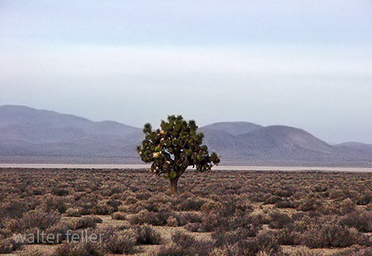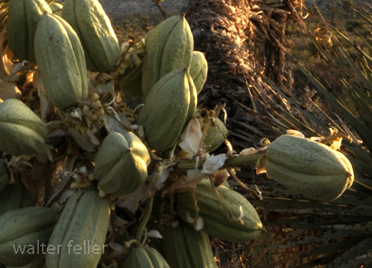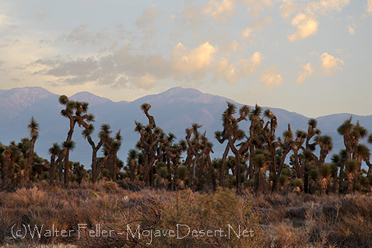Joshua Tree
Yucca Brevifolia
The Joshua tree (Yucca brevifolia) is a large, branching member of the yucca family found primarily in the Mojave Desert. It is not a true tree, but a succulent adapted to arid conditions. It typically grows between 15 and 30 feet tall, with some reaching 40 feet, and lives for hundreds of years.
There are two recognized subspecies:
These subspecies are tied to different species of yucca moths. The western form is pollinated by Tegeticula synthetica, while the eastern is pollinated by Tegeticula antithetica. This mutualistic relationship is vital—without the moths, the trees cannot reproduce.
The Joshua tree grows slowly, just a few inches per year, and blooms only when conditions are right, usually after cold winter periods followed by enough rainfall. Seed dispersal is primarily done by rodents who cache seeds in the soil.
Its native range spans parts of California, Nevada, Arizona, and Utah, at elevations from 2,000 to 6,000 feet. It serves as an indicator species for the Mojave Desert ecosystem, providing shelter and food for a variety of animals.
The tree faces serious threats. Climate change is reducing suitable habitat, especially at lower elevations. Hotter temperatures, less rainfall, and more frequent wildfires—fueled by invasive grasses—are killing young trees and preventing new ones from establishing. A 2020 wildfire at Covington Flats in Joshua Tree National Park burned a key high-elevation refuge.
Conservation efforts include seed banking, habitat restoration, fire management, and proposals for assisted migration to cooler areas. The Mojave Desert Land Trust has collected millions of seeds. In 2023, California passed the Western Joshua Tree Conservation Act to protect the species under state law.
Joshua trees are culturally significant, named by Mormon pioneers who saw the branches as resembling the biblical Joshua raising his hands in prayer. Indigenous groups like the Cahuilla also used parts of the plant for food, tools, and fiber.
Despite the challenges, researchers, land managers, and conservationists are working to ensure this symbol of the desert can persist for future generations.


Joshua tree range map
Joshua Tree Habitat
Wildlife Habitat


Shallow roots

Fruit can persist on the tree, but usually disintegrates rapidly.

Flowering usually occurs in the spring between March and May.

A Joshua tree forest in the western Mojave Desert